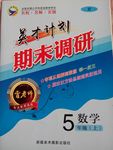题目内容
A volcano in Indonesia erupted on November 16th, 2010, ________, hundreds of people were killed.
A. continuously B. consequently C. constantly D. consistently
B

 英才计划期末调研系列答案
英才计划期末调研系列答案I was late for the school bus and rushing to get ready. My dog, Tippy, got to the front door and lay down in front of it – his way of asking to be petted. I___36___his begging for affection (喜爱), hurdled over him and ran for the waiting bus.
___37___, that afternoon, when I came home, Mom said to me___38___, “Honey, I have some___39___news that I need to tell you. This morning, while you were at school, Tippy was hit by a car and___40___. I’m so sorry.”
“No! It’s not true!” I was___41___. I couldn’t believe her. “Tippy, come here! Come on, boy!” I called and called for him. I waited. He didn’t come. Feeling___42___, I wandered into the living room. I didn’t cry that night. I still couldn’t believe that he was___43___.
When I got off the bus the next day, the___44___at home was deafening. Finally, my sobs (哭泣) bubbled up and erupted (喷发) like lava (熔岩) from a volcano. I couldn’t stop___45___. I hadn’t even petted him when I left.___46___could I have known that was my last chance? I cried until I felt empty inside.
Time passed, and against my will, I started to___47___some things. I realized what little control any of us have over what happens ___48___ a dog. We can do everything right, but___49___things can still happen. But good things can happen too. That’s___50___. The best way to deal with the hard times is to___51___what you need to do to get through them when they come, and to remember that hard times always___52___.
I now deeply understand the “circle of life”. Everyone is born, everyone___53___, and that’s the way it is. If dogs never died, there would be no___54___for others like Belle – my new dog.
Best of all, I realized that Tippy___55___all of my good memories of him. And they come to me every time I call!
|
1. |
|
|
2. |
|
|
3. |
|
|
4. |
|
|
5. |
|
|
6. |
|
|
7. |
|
|
8. |
|
|
9. |
|
|
10. |
|
|
11. |
|
|
12. |
|
|
13. |
|
|
14. |
|
|
15. |
|
|
16. |
|
|
17. |
|
|
18. |
|
|
19. |
|
|
20. |
|
 ions can cause lava flows, hot ash flows, mudslides, falling ash and floods, which is likely to knock down entire forests, cause floods and earthquakes. Fresh volcanic ash can cause damage to the lungs of older people, babies and people with respiratory problems.
ions can cause lava flows, hot ash flows, mudslides, falling ash and floods, which is likely to knock down entire forests, cause floods and earthquakes. Fresh volcanic ash can cause damage to the lungs of older people, babies and people with respiratory problems.